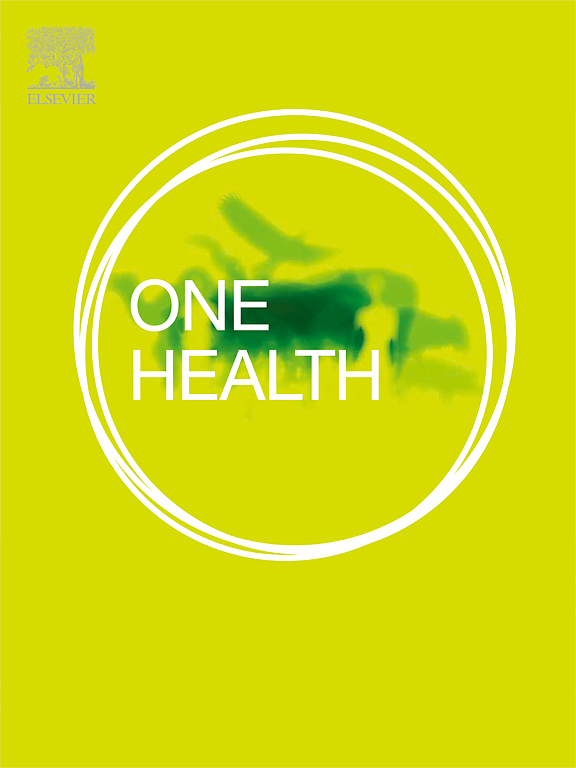Indoor endotoxin and house dust mite concentrations in the canine homologue of human atopic dermatitis
IF 4.1
2区 医学
Q1 INFECTIOUS DISEASES
引用次数: 0
Abstract
Background
Household endotoxin exposure and house dust mite (HDM) allergens have been recently gaining attention for their immunological potential to affect allergic symptoms. Although dogs are spontaneous models of human atopic dermatitis (AD), there are few studies exploring their relationship. The aim of this study is to analyze the effects of HDM and endotoxin concentrations on AD in dogs and compare their immunological profiles with humans.
Methods
We graded the canine AD Extent and Severity Index-4 (CADESI-4), Pruritus Visual Analogue Scale (PVAS), and transepidermal water loss (TEWL) in dogs with (n = 42) and without AD (controls; n = 18). Serum immunoglobulin E (IgE), interleukin (IL)-4, IL-31, and IL-33 levels were measured. Dog owners were required to answer residential environmental questionnaires and measure the average indoor relative humidity (RH) and temperature for 48 h. Dust samples were collected from the floor and analyzed for HDM allergens including Dermatophagoides farinae (Der f1) and D. pteronyssinus (Der p1) allergen and endotoxin.
Results
Both the Der f1 concentration and endotoxin exposure levels from the floor dust had an inverse association with TEWL in dogs with AD (P < 0.05) but not in controls. Furthermore, the endotoxin concentration was negatively associated with the IL-4 level. No significant difference was found in endotoxin exposure and the Der f1 concentration between dogs with AD and controls.
Conclusions
Indoor HDM exposure is associated with decreased TEWL, and endotoxin concentrations may contribute to the mitigation of CAD symptoms.
人特应性皮炎犬类同系物的室内内毒素和屋尘螨浓度
家庭内毒素暴露和屋尘螨(HDM)过敏原最近因其影响过敏症状的免疫学潜力而受到关注。虽然狗是人类特应性皮炎(AD)的自发模型,但很少有研究探索它们之间的关系。本研究的目的是分析HDM和内毒素浓度对犬AD的影响,并将其免疫特征与人类进行比较。方法对犬AD程度和严重程度指数-4 (CADESI-4)、瘙痒视觉模拟量表(PVAS)和经皮失水(TEWL)进行分级,其中有(n = 42)和无(对照;n = 18)。测定血清免疫球蛋白E (IgE)、白细胞介素(IL)-4、IL-31、IL-33水平。狗主人被要求回答住宅环境调查问卷,并测量48小时的平均室内相对湿度(RH)和温度。从地板上收集灰尘样本,分析HDM过敏原,包括farinae (Der f1)和D. pteronyssinus (Der p1)过敏原和内毒素。结果Der f1浓度和地板粉尘内毒素暴露水平与AD犬TEWL呈负相关(P <;0.05),但对照组没有。此外,内毒素浓度与IL-4水平呈负相关。与对照组相比,AD犬的内毒素暴露和Der f1浓度无显著差异。结论室内HDM暴露与TEWL降低有关,内毒素浓度可能有助于减轻CAD症状。
本文章由计算机程序翻译,如有差异,请以英文原文为准。
求助全文
约1分钟内获得全文
求助全文
来源期刊

One Health
Medicine-Infectious Diseases
CiteScore
8.10
自引率
4.00%
发文量
95
审稿时长
18 weeks
期刊介绍:
One Health - a Gold Open Access journal.
The mission of One Health is to provide a platform for rapid communication of high quality scientific knowledge on inter- and intra-species pathogen transmission, bringing together leading experts in virology, bacteriology, parasitology, mycology, vectors and vector-borne diseases, tropical health, veterinary sciences, pathology, immunology, food safety, mathematical modelling, epidemiology, public health research and emergency preparedness. As a Gold Open Access journal, a fee is payable on acceptance of the paper. Please see the Guide for Authors for more information.
Submissions to the following categories are welcome:
Virology,
Bacteriology,
Parasitology,
Mycology,
Vectors and vector-borne diseases,
Co-infections and co-morbidities,
Disease spatial surveillance,
Modelling,
Tropical Health,
Discovery,
Ecosystem Health,
Public Health.
 求助内容:
求助内容: 应助结果提醒方式:
应助结果提醒方式:


